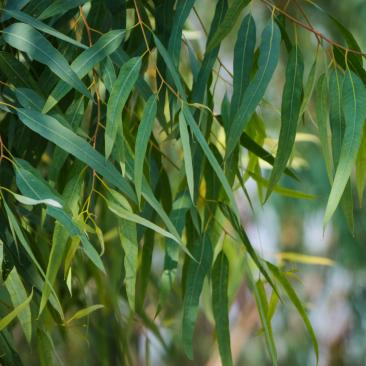Eucalyptus trees, commonly known as ‘gum-trees’ because of the gooey sap they exude, are iconic native trees that dominate the Australian landscape. Covering around 100 million hectares, or 77% of Australia’s total native forest area, eucalypts come in all shapes and sizes and can be found from the alpine regions to the outback and edges of rainforests. This National Eucalyptus Day, FSC Australia and New Zealand highlights the importance of eucalyptus trees to Australia’s native biodiversity, and we celebrate their significance to our national identity.
Eucalyptus is a genus that includes around 800 species in the genera Angophora, Corymboa and Eucalyptus, with nearly all native to Australia. They are a fast-growing tree that can often reach great heights. The mighty mountain ash (Eucalyptus regnans), for example, is the world’s tallest flowering tree and often exceeds 90 meters in height. Eucalyptus trees have their evolutionary roots in the supercontinent Gondwana, when Australia was still connected to Antarctica, and as Australia drifted north, they adapted to drier climates, weathered soils and a fire-prone landscapes.

Features such as oil-filled leaves and bark that can easily shed make eucalypts highly flammable, but this ability to stoke a fire is all part of their survival strategy. Hot and fast-burning fire do less damage than slow-burning fires and help protect the trees’ seeds from cooking. Even if the top of a eucalypts is damaged following fire or drought, many have the remarkable ability to quickly re-sprout from dormant buds located under the bark or in lignotubers at the base of the tree. These features have helped them survive and dominate the increasingly harsh Australian environments over the last 30 million years. So dominant are they, that most Australians would be hard pressed to go 10 minutes from their front door without spotting a eucalyptus tree.
Eucalypt trees also play an important role in the FSC system and make up a significant portion of the FSC-certified forested area in Australia. This certified area covers eucalyptus plantations as well as significant tracts of eucalypt-dominated native forest set aside for conservation purposes. FSC’s rigorous requirements offer a range of protections for these eucalyptus forests and the wildlife that call them home. Typically, what tends to spring to mind when thinking of the magnificent Australian eucalyptus trees is the eucalypt-munching koala that relies on them for food and habitat. FSC certificate holders are spearheading efforts for koala conservation in Australia and are implementing procedures into their forestry practices to protect koalas that move into their plantations from nearby forests. Some for example, use koala spotters to work ahead of harvest machines to identify koalas. Where identified, the cluster of trees remain standing until the koala relocates.
The significance of eucalypt trees in Australia is far-reaching, providing habitat to the native and rich biodiversity, cultural importance to Indigenous Australians and also contributing to large-scale construction, furniture making, pulp for paper and other everyday forest products. The FSC certification system ensures the protection of valuable natural forest areas and species, fights illegal logging, and supports the implementation of integrated landscape management policies – including reforestation and forest restoration products. To support the protection of vital ecosystems like eucalypt forests, look for the FSC tree before purchasing a forest product or check the FSC Certificates Public Dashboard to confirm that the product has come from a responsibly managed forest.
